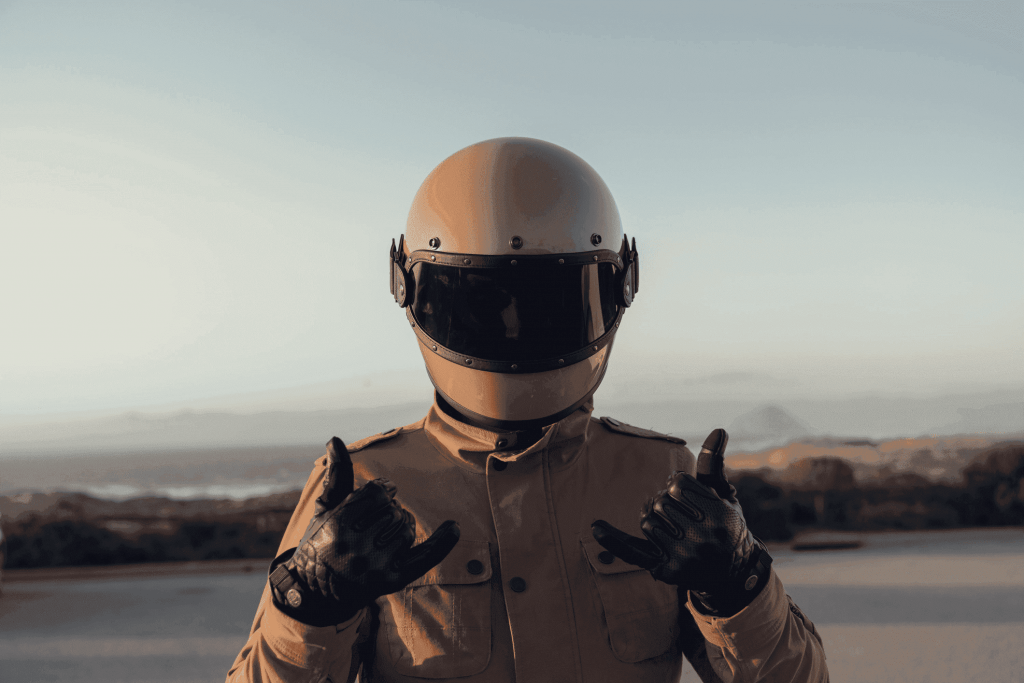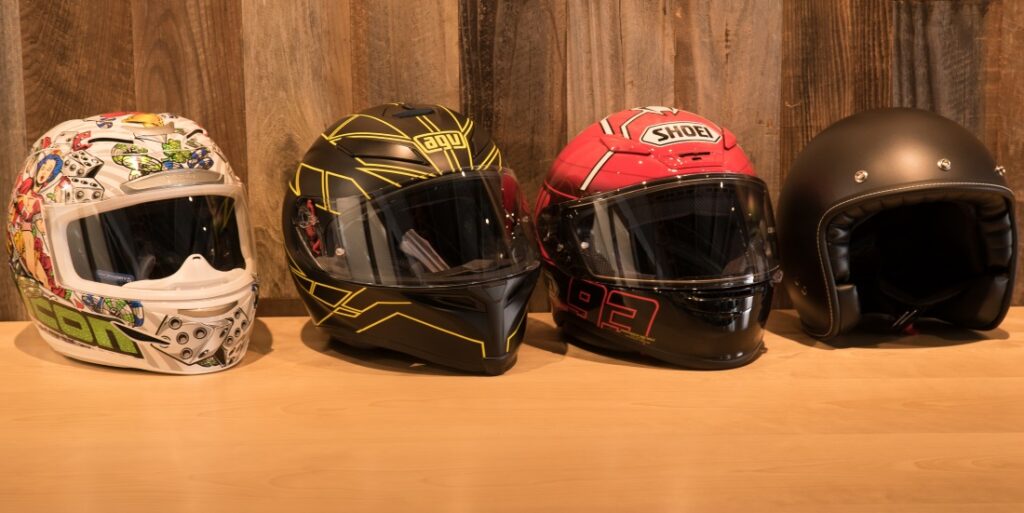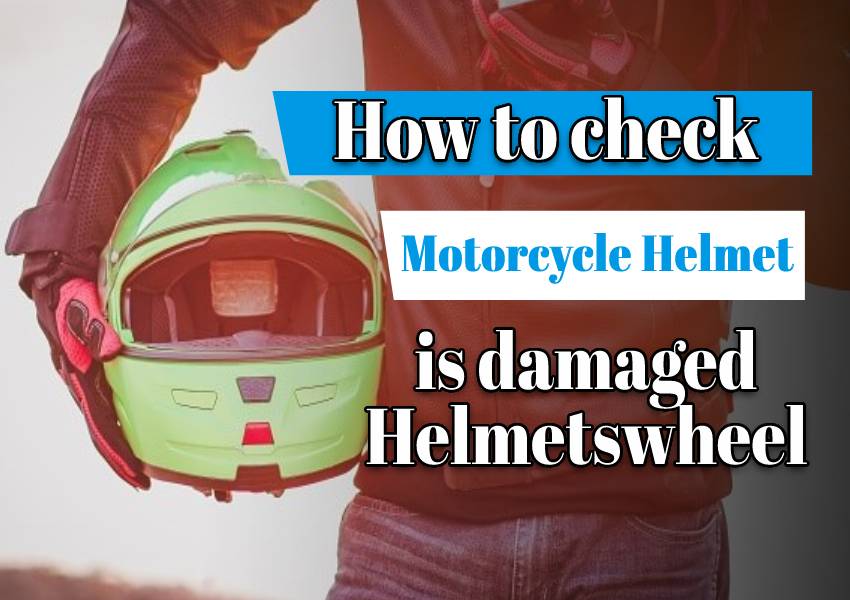A damaged motorcycle helmet is a serious concern for bikers. A harmed helmet might have influenced the results of a collision and, in some circumstances, be the trigger of an accident. It’s critical to understand how to check if motorcycle helmet is damaged in order to avoid being penalized because of it.
A typical full-face helmet isn’t cheap so even if you don’t take your safety too seriously, chances are, you would care for it just enough not to want it all scratched up. Also, you wouldn’t want anything bad happening to your loved ones or anyone riding with you on your bike right? So take good care of your helmet and get a few pointers on How To Check If Motorcycle Helmet is Damaged.
This Article will show you How To Check If Motorcycle Helmet is Damaged, whether it’s New or Old.
Table of Contents

In-depth Motorcycle Helmet Inspection
Before and after usage, it is a good habit to examine your helmet for damage every day. There are most 4 important areas to inspect:
- Helmet Interior
- Balance
- Helmet Visor
- Helmet Exterior
1: Interior
Look for the label attached to the EPS Foam if you don’t know when your motorcycle helmet was made. It’s critical to know when your helmet was made since it allows you to determine when it needs to be replaced. Gently rub the palm of your hand over the EPS liner if you detect any lumps or loose threads.
2: Balance
Put on the helmet and turn your head to the left and right a few times to check for balance and comfort.
Even after tightening the helmet chin strap, there might be an internally damaged helmet if the helmet feels wobbly.
3: Visor
The visor allowed the user to see by shielding their eyes from wind and dirt. Examine the visor for a significant number of micro-scratches, which might obstruct your vision while riding and cause an accident. Check the visor screws for tightness and make sure they can support the mechanism.
4: Exterior
Examine the outside for signs of serious scratches or fractures that may have been caused by storage conditions, temperature or humidity changes, or rubbing against a rough surface.
Scratches that may be polished to a high gloss are not an issue. If you notice any large fractures or cracks in the outer shell, the helmet has taken a lot of abuse and should be replaced as soon as possible.

In Dept Motorcycle Helmet Analysis
To properly evaluate the damage to your helmet, you must examine the following 4 things:
- The Motorcycle Helmet visor
- The EPS Foam
- Motorcycle Helmet Chin strap
- The Shell of the Motorcycle helmet
The Motorcycle Helmet Visor
To inspect any tiny scratches on the visor, place the helmet on and look into a light source through the visor. Once you’ve finished cleaning your visor, look for any little scratches on it. Make sure there aren’t too many scratches on your visor that might impair your vision. Examine the weather seals around the eye-port for dents and tears.
The EPS liner
Examine the liner for compressions at various locations carefully. To examine the liner’s flexibility and response, use your thumb to press on it. Examine the liner’s backside for dents and spider-web cracks. If any dents are discovered, check those areas with your thumb again.
Helmet Chin strap
Glide your thumb over the webbing of the helmet chin straps to inspect it. Check to see whether the D-rings are secure and can keep the chin strap firmly in place. Put on the helmet, adjust the chin strap, and move your head around to check if the strap is still firm or not.
The Shell of the Helmet
The outer shell is the most essential component of the helmet since it surrounds the user’s head. The outer shell takes damage over time from the continual change in weather and exposure to harsh conditions and friction. Examine the top of the outer shell for decolorization and large scratches. Then inspect the outside for wide cracks and splitting. If polishing doesn’t remove the fractures.
MAKE YOUR MOTORCYCLE HELMET LAST LONG
Helmets are one of the most important motorcycle safety standards products. It protects the head in a collision. However, many drivers fail to take an important step in ensuring that their helmets are functioning and lasting as long as possible: regular maintenance. Here are some suggestions for keeping motorbike helmets in good operating condition and extending motorcycle helmet life span.
- Keep it clean
It is critical to clean one’s helmet on a regular basis in order to preserve its condition. It is necessary to use cleaning solutions to clean the outer shell. It is worth noting that ammonia-based cleaners such as Colin should not be used. The visor’s quality deteriorates if the inner lining is cleaned with ammonia-containing cleansers.
Warm water and mild detergent should be used for cleaning the inner lining. It’s best not to squeeze the foam too tightly, since it may damage it. Detailed Guide about how to clean motorcycle helmet
- Dry it out
The sweat that builds up in the inner foam lining while wearing a helmet for an extended period causes an odor. That’s why it’s critical to air your helmet out under the sun. It aids in the disinfection of the foam and eliminates any unpleasant smells. It is also preferable not to use a high-intensity dryer since doing so might damage the shape of the foam layer.
- A clear visor
The visor is a crucial component of the helmet that protects the rider’s eyes from dust, sunlight, and bugs. It is critical to clean the visor carefully. Use of ammonia-based cleaning chemicals, especially if one has an anti-glare coating, is not recommended. Clean a paper towel in water and put it on the visor before dipping it in the water again to remove any dust or debris caked there. Later, use a clean cloth to wipe it away.
- Use better storage
In the helmet, they store their gloves, keys, and sunglasses. However, we don’t realize that the sharp edges might scratch the inner foam lining or make it dirty as well. That’s why additional storage is a good idea. Additional storage can be added to a bike for safekeeping by purchasing one of these accessories.
It’s also essential to avoid purchasing a used helmet since you don’t know whether the previous owner was in an accident with it.

Conclusion
Every motorbike or moped rider should be able to examine and assess the condition of their helmet. Even though the methods outlined in this article may assist you with this evaluation, it is always a good idea to get expert guidance when it comes to the usefulness of any motorcycle safety equipment.
Some manufacturers provide helmets for inspection and will send a certificate of confirmation that the helmet is in good working order. If you’re ever unsure if your helmet is in proper operating condition, have it checked by an expert.
